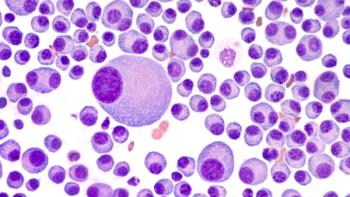
Opportunistic Infections: Better Have a Pharmacist Onboard
Approximately 1.2 million individuals live with HIV/AIDS in the United States. This population is at an increased risk of opportunistic infections (OIs), an area where pharmacists have significant potential to make meaningful interventions.
Approximately 1.2 million individuals live with HIV/AIDS in the United States. This population is at an increased risk of opportunistic infections (OIs), an area where pharmacists have significant potential to make meaningful interventions. The Journal of Hospital Infection published a study online in its December 2016 issue that examines pharmacists' impact on OI prophylaxis in patients with HIV/AIDS.1
Immune function deteriorates as HIV progresses and develops into AIDS, and thus the risk of OIs increases. In patients with normal immune function, OIs are not a major threat. In immunocompromised patients, they can be deadly. When CD4 cell counts (a marker of immune function) fall below 200 cells/microliter, clinicians usually start OI prophylaxis. Studies indicate that appropriate OI prophylaxis in patients with HIV/AIDS adds survival benefit. Multiple studies show the benefit of pharmacists’ interventions in antiretroviral therapy, but none specifically address OI prophylaxis.
A group of researchers based at the Carolinas Medical Center in North Carolina conducted a single-center, prospective intervention study. They examined pharmacists' recommendations on appropriate OI prophylaxis. Then, they compared the results to a retrospective, pre-intervention control group.
Forty-two patients were included in the prospective group. Pharmacists made 27 recommendations in 15 patients. The most common recommendation was the addition of an OI prophylaxis medication and 89% of recommendations were accepted by providers. Baseline prescribing rates of OI prophylaxis increased from 58% in the retrospective cohort to 93% in the prospective cohort. However, 83% of patients had OI prophylactic medications prescribed to them at discharge. This data suggests an opportunity for pharmacists to be more involved in the transitions of care in these patients.
The researchers estimate that an average health-system stay for patients with HIV costs $13,000, with 9% attributed to OIs. Involving pharmacists in the care of these patients can lead to a health-system cost-savings initiative and reduce the morbidity and mortality associated with OIs.
As drug experts, pharmacists are positioned to make important clinical contributions in the care of these complex patients. They make a great addition to the health care team.
Reference
- Schatz K, Guffey W, Maccia M, Templin M, Rector K. Pharmacists’ impact on opportunistic infection prophylaxis in patients with HIV/AIDS. J Hosp Infect. 2016; doi.org/10.1016/j.jhin.2016.09.016.
Newsletter
Stay informed on drug updates, treatment guidelines, and pharmacy practice trends—subscribe to Pharmacy Times for weekly clinical insights.




















































































































































































































